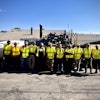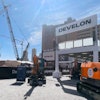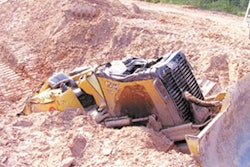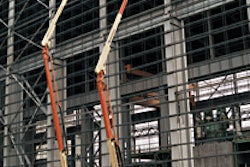"Black-letter law" does not mean much in the real world. Black-letter law simply tells us what the law would say before facts are applied to a given situation. But the law only matters when facts come into play. Businesses do not care about abstract principles of law, but rather about how the law, in application, affects them and their operations. Instead of black-letter law businesses want to know what practices will get them sued, what business practices they can follow so that they will prevail when that inevitable lawsuit is filed, and what business practices they can follow to avoid lawsuits in the first place.
An Industry-Specific Example: The Case of The Wary General Contractor
For example, while Texas black-letter law is well settled that a general contractor is not routinely liable for injuries to its subcontractors' employees, Texas general contractors still often find themselves defendants in lawsuits brought by employees of subcontractors who are injured in the course and scope of their duties. The "why" is simple: most subcontractors carry worker's compensation insurance. One benefit of buying worker's compensation insurance is that, if injured, the employees cannot sue their employers, even if the injury is caused by the employer's negligence.
Take a typical injured subcontractor's employee - a roofer, a framer, etc. He cannot sue his employer, ABC Roofing or XYZ Framing, as that entity provides worker's compensation insurance. Who else is around, has insurance dollars and would make a ready target? The general contractor, of course. So despite "black-letter law" to the contrary, injured workers employed by subcontractors will often bring negligence claims against general contractors.
The Typical Claim
Rather than trying to overturn the black-letter law, most injured subcontractor employee cases pick the two narrow exceptions to the law and try to argue their facts into the exceptions. The narrow exceptions have been repeatedly stated by appellate courts, including the Texas Supreme Court, as follows:
- When a general contractor retains control of the "means, methods and details" of a subcontractor's employees' work in the construction contract, then the general contractor can be liable to the subcontractor's employees for any injuries arising out of that control.
- When a general contractor does not have a contractual right of control, but nonetheless exercises actual control of the "means, methods and details" of subcontractor's employees' work, the general contractor can also be liable to the subcontractor's employees for any injuries arising out of that control.1
Because these rules have been consistently articulated by the courts for a number of years, the vast majority of general contractors carefully draft their contracts to avoid the situation posed in the first exception (and those very few who do not, should). Hence, the typical case against a general contractor is brought under the second exception. A creative plaintiff will allege that the general contractor exercised actual control over the means, methods and details of the subcontractor's work in some way.
What Does Black-Letter Suggest?
So how does a general contractor avoid controlling the "means, methods and details" but remain in control of its worksite? What types of supervision can a general contractor provide before risking liability? Moreover, and of utmost importance to general contractors, what types of supervision must a general contractor avoid?
First of all, a general contractor can determine the order in which various trades will conduct work without creating liability. A general contractor can order the various trades to start and/or stop work. A general contractor can post a generic safety plan. A general contractor can conduct generic safety meetings for its own employees and -can also require its trades to conduct their own safety meetings with their employees. A general contractor can inspect the project to determine progress, compliance, and other project issues. A general contractor can also require that its subcontractors adhere to OSHA (Occupational Safety and Health Administration) Regulations, the MUTCD (Manual on Uniform Traffic Control Devices) or other applicable state and/or federal safety regulations and guidelines.
Furthermore, the absolute "cannots" are also relatively simple. The general contractor cannot approach a subcontractor's employee and instruct the employee as to the specific way that he should perform his job. A general contractor cannot tell the low-slope roofers that they must have two men mop tar, while another worker screws in insulation tiles, all the while using a safety monitoring system as fall protection for the crew. Additionally, the general contractor's project superintendent cannot dictate specific control details to the subcontractor's employees, e.g. "Everyone must answer to me on all issues. I don't want a pipe laid, a brick mortared, a sheet of drywall hung without my specific knowledge and approval. You will use my tools, follow my safety plans, and answer to me in all things." The micro-managing dictator approach to project management will always create liability for the general contractor in the event of an injured subcontractor's employee.
The appellate courts have also answered some questions as to what facts will create liability, in the gray areas. The Texas Supreme Court has made clear that if a general contractor mandates a specific type of safety device is to be employed and learns through inspections that the safety device has not been put in place, the general contractor can become liable if it fails to intervene and a subcontractor's employee is subsequently injured due to the lack of that safety device.2 The Texas Supreme Court has also clarified that when a general contractor on a multi-story building project mandates that its own employees use specific fall protection and knows through regular inspections that the subcontractor's employees are using inferior (and non-OSHA compliant) fall protection but fails to intervene, the general contractor can become liable when a subcontractor's employee falls from the inferior rigging.3
Law in Application
Does this mean that the prudent general contractor should take the ostrich approach to project management, simply to avoid potential future liability in the event that someone gets hurt? Ethical considerations aside, the answer is still "no." A general contractor cannot effectively supervise a project if it ignores what is going on at a project simply to protect itself from future liability. Moreover, the Texas Supreme Court has specifically commented on the question, clarifying that,"(a) general contractor is not 'required to stand idly by while another is injured or killed in order to avoid liability.' Nor do we believe that the liability rules contemplate putting those who employ independent contractors in that position."4
The best practice, then, in order to effectively manage a project and keep fully apprised of the happenings on the project, would require three things:
- If at all possible, avoid mandating specific types of safety plans or construction activities, such that the general contractor will not be seen to have usurped control over the means, methods and details of a subcontractor's work.
- Keep apprised of general OSHA (or other state/federal) safety regulations for the types of trades operating on site, such that when a blatant violation is committed, the general contractor recognizes it as such.
- When the general contractor recognizes a problem on site, rather than correcting and instructing specific subcontractor's employees, the general contractor should address the issue with the worker's foreman, and demand that the foreman either correct his employees or stop work until such correction can be made.
Following these guidelines may not stop subcontractor's employees' lawsuits. However, these practices will likely lead to more defensible and manageable claims, when they do arise. Moreover, by following these principles, and having a plan in place to address safety concerns as they arise, injuries may also be less likely to occur. And that is a win-win situation for everyone.
Elizabeth Weathers is a trial attorney with Sedgwick, Detert, Moran & Arnold LLP whose practice focuses on environmental liability litigation, construction accident and defect litigation, and product liability litigation. She can be reached at 469.227.8200 or by e-mail at [email protected].
1 Dow Chemical Co. v. Bright, 89 S.W.3d 602, 606 (Tex. 2002); Redinger v. Living, Inc., 689 S.W.2d 415, 418 (Tex. 1985); see also Restatement (Second) of Torts 414 cmt. c (1965).
2 Tovar v. Amarillo Oil Co., 962 S.W.2d 469 (Tex. 1985).
3 Lee Lewis Constr., Inc. v. Harrison, 70 S.W.3d 778 (Tex. 2001).
4 Id. at 801 (quoting Hoechst-Celanese Corp. v. Mendez, 967 S.W.2d 354, 356 (Tex. 1998)).

















